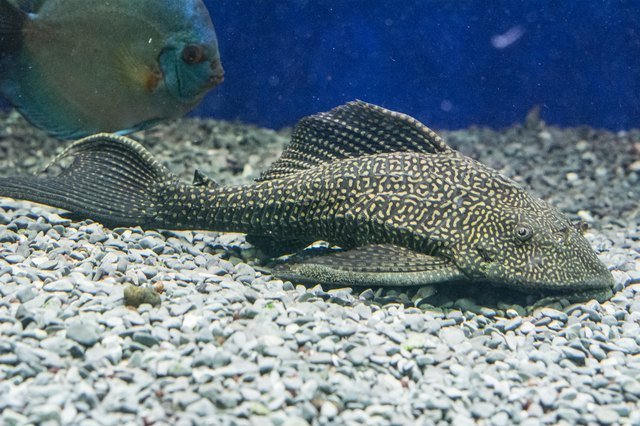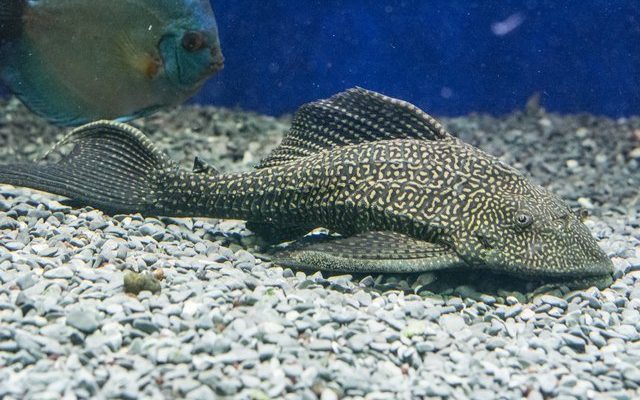
So, what exactly is a Plecostomus? Picture a fish that can grow quite large—some varieties can reach up to two feet long! They’re often found lounging on the bottom of the tank, gliding over surfaces with their unique sucker mouths. They belong to the suckermouth catfish family and are originally from South America. But don’t let their size intimidate you! With the right care, a pleco can thrive in your aquarium and become a star in your underwater landscape.
Understanding the Different Types of Plecostomus
Before you rush off to find the perfect pleco, it’s essential to know that there are several different types. Each type has its own specific care requirements and characteristics. The most common types you might encounter are the Common Plecostomus, Bristlenose Plecostomus, and Clown Plecostomus.
The Common Plecostomus is the one you’ll often see in pet stores. They’re hardy, grow large, and have a calm demeanor, making them a great addition to community tanks. However, they do need plenty of space as they can grow quite big.
The Bristlenose Pleco, on the other hand, is smaller and has a bristly appearance on the males. They do an excellent job at algae control and are more suited for smaller tanks compared to their common cousin. Finally, the Clown Plecostomus is known for its striking coloration, but it also gets quite large, so be prepared for that!
So, which one should you choose? It really depends on your tank setup and how much space you can provide.
Choosing the Right Tank Size and Setup
You might be thinking, “How big of a tank does a pleco need?” Well, that’s a crucial question! A single adult pleco will need at least 75 gallons of water to swim freely and thrive. If you plan to keep more than one, or if you have a larger breed, consider going even bigger.
Your tank setup should mimic their natural habitat. Start with a sandy substrate; this is easier on their bodies as they like to dig. Include plenty of hiding spots—use caves, driftwood, and plants. Plecos love to have places to feel secure, so creating a cozy environment is key.
In terms of water parameters, they prefer a pH level of around 6.5 to 7.5 and a temperature between 75°F to 82°F. Regular water changes and good filtration are a must for keeping your pleco happy and healthy.
Feeding Your Plecostomus
Feeding a plecostomus is not as straightforward as just tossing in some flakes. While they do enjoy algae, they also need a balanced diet to thrive. Here’s the thing: you should offer a variety of foods to ensure they’re getting all the nutrients they need.
A good feeding regimen includes:
- Algae Wafers: These are specially formulated for plecos and often contain the right balance of vitamins and minerals.
- Fresh Vegetables: Zucchini, cucumber, or sweet potato can be added to their diet. Just remember to blanch them first to soften them up!
- Meaty Foods: Occasionally, you can provide some protein like bloodworms or shrimp pellets for a treat.
Make sure to feed your pleco a variety and avoid overfeeding. It’s best to offer food once or twice a day, depending on their activity level. And always remove any uneaten food to keep the tank clean.
Maintaining Water Quality
Water quality is essential for a healthy plecostomus. These fish are quite sensitive to their environment, so it’s vital to keep the water clean and well-filtered. A strong filter can help manage waste, but you’ll still need to do regular water changes—typically about 25% every two weeks.
Monitor the ammonia, nitrite, and nitrate levels in your tank. Ideally, ammonia and nitrite should be at 0 ppm, while nitrates can be up to 20-40 ppm. A good water-testing kit can help you keep an eye on these levels.
Also, keep an eye on the temperature and pH. Sudden changes can stress your pleco and lead to health issues. Regular checks and a good maintenance routine go a long way in preventing problems.
Common Health Issues and How to Handle Them
Like any fish, plecostomus can face health challenges. Some common issues include ich, fin rot, and cloudy eye.
If you notice white spots on your pleco, that could be ich—an illness often caused by stress or poor water quality. You’ll want to treat the tank with a specific medication and raise the water temperature slightly.
Fin rot usually appears as frayed or discolored fins and is typically due to poor water conditions. Regularly changing the water can help, and you may need to treat with medicine if it doesn’t improve.
Cloudy eye might signal an environmental issue or injury. If you spot this, check your water parameters and ensure your pleco isn’t getting bullied by other fish.
Social Behavior and Tank Mates
Plecostomus are generally peaceful fish, but they can display some territorial behaviors, especially males. It’s best to avoid keeping two males together in smaller tanks to prevent fights. Instead, include tank mates that are similarly sized and peaceful.
Good companions include:
- Corydoras Catfish
- Tetras
- Guppies
- Rainbow Fish
Avoid aggressive fish that might bully your pleco or nip at its fins. If you create a balanced community, your plecostomus can thrive alongside its aquatic friends.
Caring for a plecostomus in a freshwater aquarium can be a rewarding experience. By understanding their needs—from tank size to feeding and health issues—you can create an ideal habitat for your little cleaning buddy. Remember, it’s about balance; keeping a clean tank, providing diverse food options, and watching out for any health issues will lead to a happy pleco.
If you take the time to learn about them and maintain their environment, you’ll find that these fish not only help keep your tank clean but also add a unique charm to your underwater world. Happy fish keeping!

